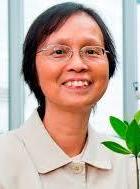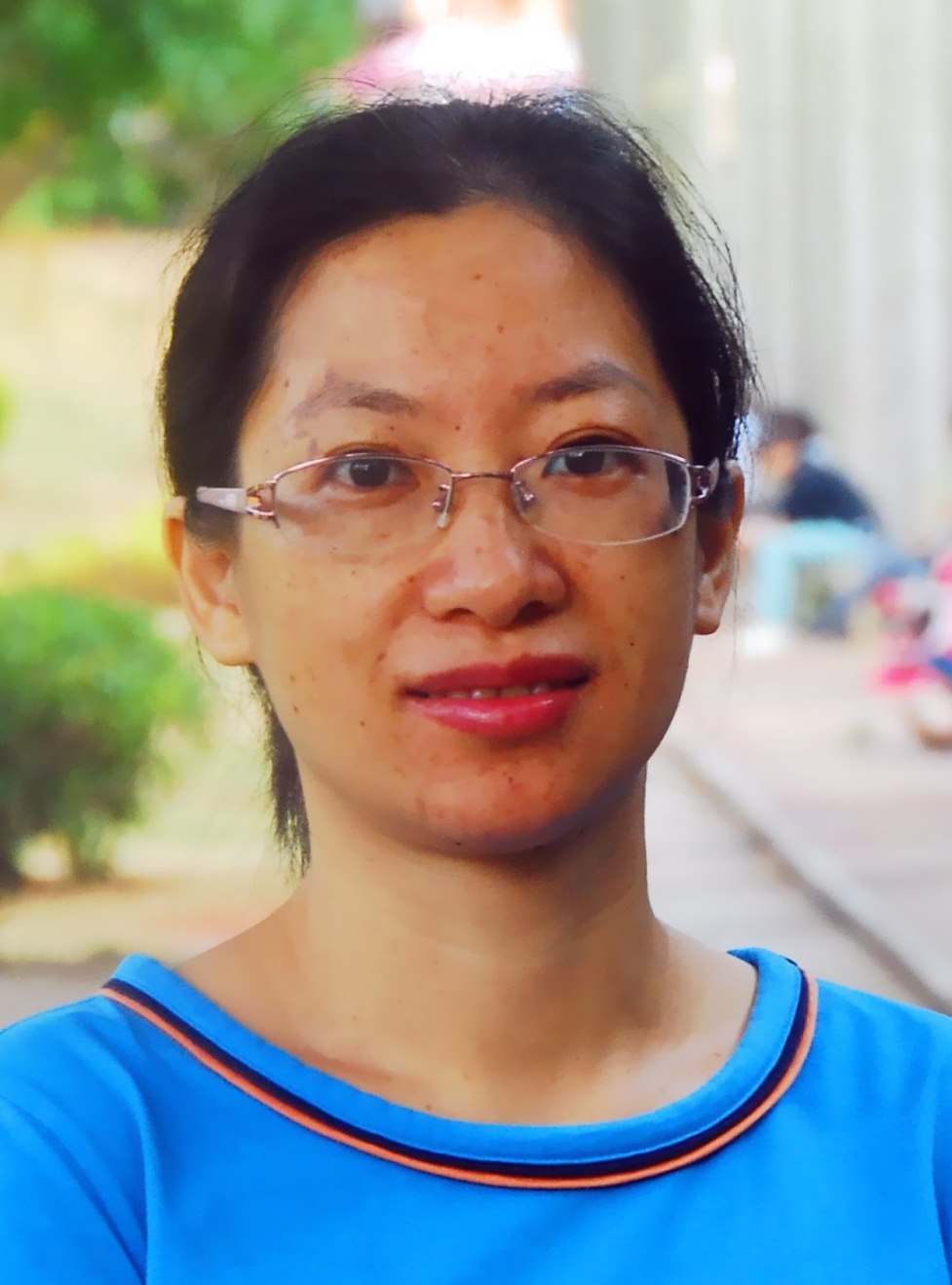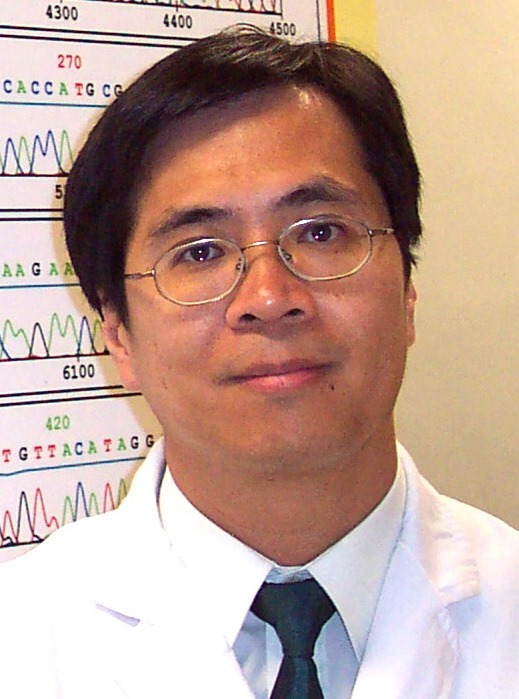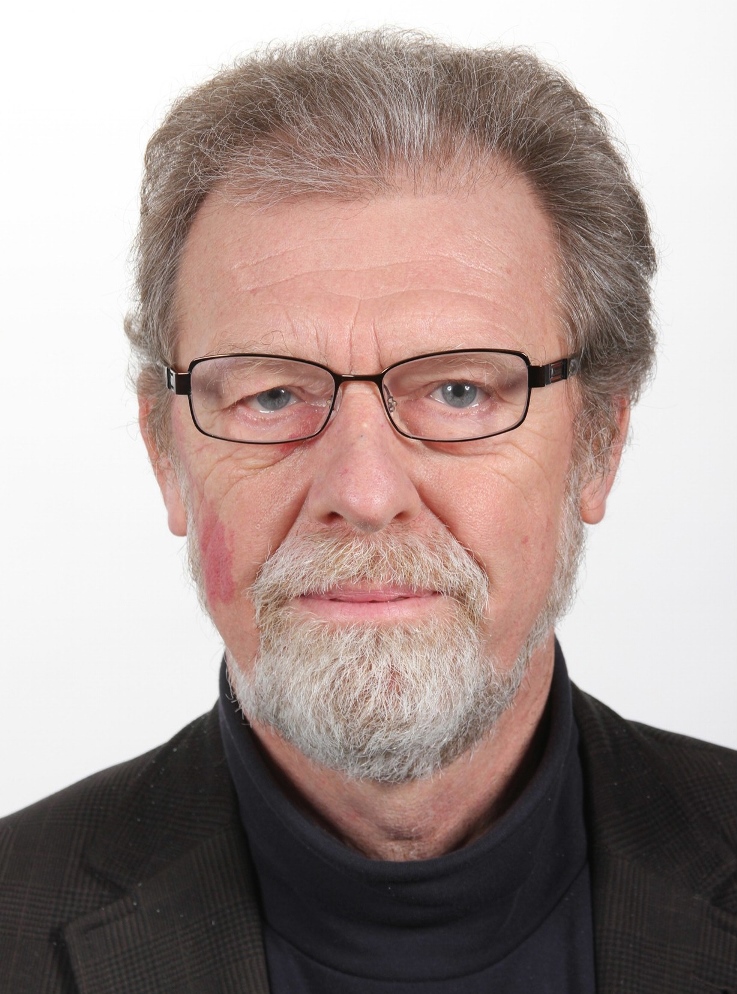|
|
Keynote Speakers
| Title:
Harmful Algal Blooms in Western Iberia (Northeast Atlantic Europe): advances in prediction capabilities and comparative approaches to single species investigations
|
|
|

|
Dr. Beatriz REGUERA
Instituto Español de Oceanografía (IEO)
Centro Oceanográfico de Vigo
Subida a Radio Faro 50
36390 Vigo, Spain
Keynote address
Low biomass harmful algal blooms (LBHABs) of toxin producing microalgae, in particular those of lipophilic shelfish toxin producers, pose the main natural threat for the shellfish industry in western Europe. Lately, Ciguatera species, traditionally ascribed to tropical coral reef areas, have been detected in subtropical Atlantic archipelagos (Canary Islands, Madeira) and caused isolated cases of Ciguatera Fish Poisoning (CFP). European directives oblige member countries to apply strict regulations on the levels of toxins in shellfish meat, and to establish monitoring programmes to detect the presence of potentially toxic microalgae. These programmes have prevented human intoxications in most instances, but are very costly in terms of man power and equipment. Once public health is protected, stakeholders demand a better prediction of the events, and whenever possible, mitigation techniques.
Thanks to monitoring inputs, research projects and development of physical transport models the next (ongoing) step is the operational-oceanography based forecast of HAB events. Models are essential tools to progress in understanding bloom dynamics through a multidisciplinary population dynamics approach. These include single-species models (e.g. physical models with algae as passive tracers) and empirical models (e.g. models for statistical forecasting). This kind of models were developed and applied in the course of the EU 7FP ASIMUTH project and bulletins designed to provide stake-holders with short-term prediction of impending toxic outbreaks. Some examples will be presented here.
A main gap for longer term prediction is to identify the causes of inter-annual variability. Long time series (up to 30 y) of physical and biological data have shown the close relationship between exceptional blooms and anomalies in winter (pre-bloom) wind circulation (for Dinophysis acuminata) or enhanced thermal stratification in summer (for Dinophysis acuta). These anomalies have to be accompanied by the appropriate, species-specific suite of oceanographic conditions (presence of inoculums, seasonality and tides).
Single-species models require a sound knowledge of the biology of the target organism including: i) the initial field N0 (x,y,z) of distribution; ii) its particular behaviour (swimming dinoflagellates, fast sinking diatoms, formation of thin layers, etc.); iii) in situ growth rates, and iv) factor(s) controlling toxicity. Seasonal upwelling-downwelling cycles appear as an important modulator of divison rates once the populations are established. A key issue in the case of holoplanktonic species, which do not rely on sexual cysts as a reproduction strategy, is the fate of overwintering cells that will serve as inoculum the next season. To tackle this question, development of focused mesoscale cruises is needed with participation of neighbouring countries affected by the same species.
Current availability of mixotrophic cultures of Dinophysis species opened the doors to research on their physiology and new results are helping to interpret their field population dynamics. Sequencing of plastidial rDNA and psbA genes in field specimens confirmed that cryptophytes (Teleaulax/Plagioselmis/Geminigera group) are the main primary source of kleptoplastids for mixotrophic species of Dinophysis. So far, only Mesodinium rubrum has been used successfully as the vector of cryptophytes plastids for different species of Dinophysis in laboratory cultures. Is that the situation in the real world? Can other kleptoplastid-bearing ciliates serve as food for Dinophysis? This important question, in addition to the identification of species-specific light (intensity and quality), inorganic nutrients (new versus regenerated production) and water column structure requirements are being tested in the new DINOMA project. With a comparative approach, this project aims to describe the ecological niche for each species of Dinophysis. Results will help explaining niche partitioning when different species of Dinophysis, sharing the same nutritional source (?), co-occur and why there are years when one species is overwhelming whereas is absent in others.
Mass cultivation of Dinophysis species may represent a reliable source of bioactive compounds of interest for regulatory purposes (toxin standards) and the pharmaceutical industry. The main causative agents of toxic outbreaks in Europe have been already cultured and characterized. Optimization of their mass cultivation to select specific compounds will be tackled within the new European Marine Biotech ERANET project MARBIoFEED to start in 2016.
REFERENCES:
Díaz P.A., Reguera B., Ruiz-Villarreal M., Pazos Y., Velo-Suárez L., Berger H., Sourisseau M. (2013). Climate variability and oceanographic settings associated with interannual variability in the initiation of Dinophysis acuminata blooms. Marine Drugs 11, 2964-2981.
Díaz P.A., Ruiz-Villarreal M., Pazos Y., Moita T., Reguera B. (in press). Climate variability and Dinophysis acuta blooms in an upwelling system. Harmful Algae
Rial P., Laza-Martínez A., Reguera B., Raho N., Rodríguez F. (in press). Origin of cryptophyte plastids in Dinophysis from Galician waters: results from field and culture experiments. Aquatic Microbial Ecology
Reguera B., Riobó P., Rodríguez F., Díaz P.A., Pizarro G., Paz B., Franco J.M., Blanco J. (2014). Dinophysis toxins: causative organisms, distribution and fate in shellfish. Marine Drugs 12, 394-461.
Ruiz-Villarreal M., García-García L., Cobas M., Díaz P.A., Reguera B. (in press). Modelling the hydrodynamic conditions associated with Dinophysis blooms in Galicia (NW Spain). Harmful Algae.
|
|
| Title: Contamination of polybrominated diphenyl ethers (PBDEs) in wastewater and their removal by microalgal isolates |
|
|

|
Prof. Nora Fung-Yee TAM
Department of Biology and Chemistry
City University of Hong Kong
Tat Chee Avenue, Kowloon, Hong Kong
Keynote address
Polybrominated diphenyl ethers (PBDEs) are widely used flame retardants which cause adverse effects to human health and environments. PBDEs are often found in wastewater discharges and entered wastewater treatment plants (WWTPs). Our research on the contamination of PBDEs in four WWTPs in Hong Kong showed that the concentrations and composition profiles of eight PBDE congeners (BDE-28, -47, -99, -100, -153, -154, -183 and -209) differed among WWTPs and fluctuated during the 15-months study period, indicating the problems of both spatial and temporal variations. Among four WWTPs, higher concentrations of PBDEs were detected in the influent and dewatered sludge from the two WWTPs receiving both domestic and industrial wastewaters than the two serve mainly residential and commercial districts. The concentrations of Σ8PBDEs (total of eight congeners) in the influent of all WWTPs ranged from 1 to 254 ng L-1, decreased to 12-27 ng L-1 in effluent, with removal efficiency ranged from 20 to 53% but high concentrations of PBDEs, ranging from 9 to 307 ng g-1 dry weights, were detected in dewatered sludge. Every day, 0.66-73 g PBDEs entered the four WWTPs, while 0.38-38 g and 0.17-17 g PBDEs were discharged to the surrounding waters via effluent and disposed to landfill sites in sludge form, respectively. These indicated that the conventional treatment processes in the WWTPs in Hong Kong are not designed for an effectively removal of PBDEs. Therefore, PBDEs are released back to the environment via treated effluent and sludge, and become substantial contamination sources. It is essential to develop effective remediation technologies for PBDE contamination.
Microalgae have been demonstrated to be effective in the removal of nutrients, heavy metals and toxic organic pollutants such as polycyclic aromatic hydrocarbons, estrogens, nonylphenols, etc. from domestic and industrial wastewaters, but their ability to remove PBDEs has seldom been reported. We hypothesize that microalgae, especially those isolated from WWTP sewage, might also have the ability to tolerate and remove PBDEs. Nine PBDE-tolerant microalgal strains were isolated from influents of the four WWTPs spiked with a mixture of DE-71 and BDE-209 (at a ratio of 5:1) at 6 µg L-1. Based on the morphological features and phylogenetic analysis of 18S rDNA sequences, they belonged to five genera, namely, Chlorella (STCh and SICh), Parachlorella (STPa1 and STPa2), Scenedesmus (STSc, TPSc1 and TPSc2), Nitzchia palea (YLBa) and Mychonastes (TPMy). Toxicity assessments revealed that four isolates, SICh, STCh, STPa1 and TPSc1, were PBDE-tolerant strains as their growths, in terms of cell numbers and chlorophyll a content, were not affected after exposed to mixtures of DE-71 and BDE-209 (at a ratio of 5:1) at low (6 µg L-1), medium (60 µg L-1) and even high (600 µg L-1) levels for seven days. On the contrary, the growth of YLBa was significantly inhibited even at the low PBDE contamination level, and the inhibition to the other three species TPSc2, STPa2, and TPMy was only found at the high level of mixed PBDEs. The ability to remove PBDEs by the isolates varied. The Chlorella isolate (SICh), one of the tolerant isolates, had the highest removal ability, with 85% Σ8PBDEs removed after 7-day exposure to the high level of PBDE mixture. The results implied that the removal of PBDEs by microalgae was not necessarily related to their tolerance. Bioaccumulation and biotransformation were important processes for PBDE removal. The removal mechanism of the tolerant and efficient Chlorella isolate (SICh) will be further discussed.
This is the first comprehensive study on the spatial and temporal variations of PBDEs in influent, effluent and dewatered sludge in four WWTPs in Hong Kong. It is also the first time isolated and identified PBDE-tolerant microalgae from influent. A Chlorella strain, SICh, with a high tolerance to BDE-47 and high removal ability was obtained.
|
|
| Title:
Environment-friendly prevention strategies for harmful algal blooms using diatoms in marine bottom sediments and algicidal bacteria derived from seaweeds and seagrasses
|
|
|

|
Prof. Ichiro IMAI
Professor
Plankton Laboratory, Graduate School of Fisheries Sciences
Hokkaido University
3-1-1 Minato-cho, Hakodate, Hokkaido 041-8611, Japan
imai1ro@fish.hokudai.ac.jp
Keynote address
There are urgent needs for bloom mitigation strategies in aquaculture areas due to huge fishery damages by harmful algal blooms (HABs). Many kinds of countermeasures have been proposed but there are few methods actually feasible to the field except for clay spraying in Kyushu area in Japan and south coast of Korea.
Rather many species of the harmful raphidophytes and dinoflagellates have a cyst stage in their life cycle. The cysts settle to the sea bottom to overwinter and thereby ensure the persistent existence in the same area. And the germination of cysts provides the inoculum for red tides to overlying waters.
It is empirically known that noxious flagellate blooms have been observed when diatoms are scarce in water columns. Diatoms form resting stage cells under nutrient-deficient conditions, and rapidly sink to sea bottom and disappear from the water columns. For example, cysts of Chattonella can germinate in the dark, whereas diatom resting stage cells require light for germination. Thus the predominance of Chattonella spp. can be attributed to the disappearance of diatoms and subsequent failure of germination of diatom resting stage cells under low light conditions at the sea bottom. The selective germination of cysts at the sea bottom is presumably a significant factor for the initiation and success in Chattonella red tides in coastal seas such as the Yatsushiro Sea and the Seto Inland Sea. Giving enough light to the abundant diatom resting stage cells at sea bottom was considered to enhance the germination of diatom resting stage cells and resultant vegetative cells are expected to proliferate in the surface water and to overwhelm Chattonella populations by exhaustion of inorganic nutrients (N and P). We here propose bottom sediment perturbation for suspending and lifting diatom resting stage cells in sea bottom to euphotic layer in coastal areas. Bottom sediment perturbation is a common technique for improving environmental conditions of sea bottom of aquaculture areas and for enhancing the production of clams in shallow coastal seas. This technique is inexpensive and environment friendly. Practical trials are highly needed in red tide occurring areas such as the Yatsushiro Sea with mass mortalities of cultured fish. Further studies are needed on improvement of gears, operation timing and scale for effective prevention of harmful red tides by enhancing diatoms in coastal areas.
Microorganisms such as bacteria appear to be promising control agents against red tides. Algicidal bacteria (AB) have actually been isolated from the coastal waters. Several studies on temporal fluctuations of AB and HAB species demonstrated that AB specifically associated with the occurrence and crash of red tides, and also contributed to the rapid termination of red tides in the coastal waters such as the Seto Inland Sea. New researches indicate large numbers of algicidal bacteria attached onto the surface of seaweeds (maximum, million of killers per gram wet weight) such as Ulva sp. (Chlorophyta) and Gelidium sp. (Rhodophyta) without occurrences of any microalgal blooms. And further we discovered comparatively abundant existence of algicidal bacteria (ten times or more) including killers for harmful dinoflagellates such as Karenia mikimotoi on the surface of leaves of seagrass (Zostera marina) and in seawater in Zostera bed with seaweed beds. The presence of the large number of algicidal bacteria indicates the potential for preventing HABs occurrences. We here propose new prevention strategies for harmful red tides by cultivation of seaweeds in aquaculture areas. When we develop and restore the natural seaweed- and seagrass-beds as a part of Sato-Umi concept, these seaweeds and seagrasses presumably function to prevent the occurrences of HABs. Further, restored seaweed- and seagrass-beds also serve as nursery grounds for important fisheries resources.
|
|
| Title:
The Biodiversity of the Benthic Dinoflagellates in Hainan Island,
south China |
|
|

|
Prof. Songhui LU
Research Center for Harmful Algae and Marine Biology
Jinan University
Guangzhou 510632, China
Keynote address
Benthic dinoflagellates are important marine components in tropical and subtropical waters. Many species in this group are capable of producing several potent toxins, including that may be involved seafood toxicity. Studies on dinoflagellates were focus more on the planktonic species and their blooms than on the composition of benthic ones, especially benthic dinoflagellates. Benthic dinoflagellates are important components and play an important role in the benthic ecosystem. The problems caused by benthic dinoflagellates are those of human and marine animal toxicity and ecosystem disruption.
Morphological characterization and distribution pattern variety exists within different species and strains. Benthic dinoflagellates are endemic to the tropical and temperate waters. The systematical study of benthic dinoflagellates in Chinese tropical and sub-tropical waters has never been formally documented. In our research, the biodiversity and distribution of benthic dinoflagellates have been studued in Hainan Island, a typical tropical and sub-tropical island in the South China Sea.
Benthic samples were collected by scuba diving in six sites during four seasons in the subtidal zone around Hainan Island. Cells were isolated from macrophyte, seagrass, and dead corals. Description of each cultured species are based on LM and SEM. Phylogeny analysis were also applied for species delineation through molecular sequencing.
The results are present as followings:
(1) Eighteen species belonged to six genera were found, including fourteen first report taxa in China (Prorocentrum concavum, Prorocentrum fukuyoi, Prorocentrum emarginatum, Gambierdiscus caribaeus, Gambierdiscus pacificus, Gambierdiscus australes, Ostreopsis ovata, Ostreopsis lenticularis, Coolia malayensis, Coolia tropicalis, Coolia canariensis, Amphidinium operculatum, Amphidinium massartii and Amphidinium gibbosum ) and four previously recorded species (Prorocentrum lima, Prorocentrum rhathymum, Amphidinium carterae and Sinophysis microcephala).
(2) Six P. lima intraspecific variations were originally described in China based on the morphological characterization and genetic analysis. The taxonomical description was corresponding with the molecular characterization on species levels, thought there were no genetic diversity between P. lima variation type 1and 2. It confirmed that morphological variation was common within the species of P. lima.
(3) The abundance of benthic dinoflagellates in Hainan Island was not high. Genus Prorocentrum was the primary benthic components with a great account (>50%) for the total cell density. The highest cell abundance of Prorocentrum was up to 2704 cells/g macrophyte while others were below 200 cells/g macrophyte.
(4) Pearson correlation analysis indicated that the total cell density had a negative relationship with the temperature and depth, but positive with salinity.
|
|
| Title:
Marine dinoflagellate proteomics: current status and future perspectives
|
|
|

|
Prof. Da-Zhi WANG
State Key Laboratory of Marine Environmental Science
College of the Environment and Ecology
Xiamen University, Xiamen, 361005, China
Keynote address
Dinoflagellates are not only the important primary producers and an essential component of the food chain in the marine ecosystem, but also the major causative species resulting in harmful algal blooms (HABs) and various shellfish poisonings. Although much work has been devoted to the dinoflagellates, our understanding of them is still extremely limited owing to their unusual features. Proteomics, a large-scale study of the structure and function of proteins in complex biological samples, has been introduced to the study of marine dinoflagellates and has shown its powerful potential with regard to revealing their physiological and metabolic characteristics. However, the application of proteomic approaches to unsequenced dinoflagellates is still in its infancy and faces considerable challenges. This review summarizes recent progress in marine dinoflagellate proteomics and discusses the limitations and prospects for this approach to their study.
|
|
| Title:
Molecular life of diatoms in response to nutrient stresses in ocean
|
|
|

|
Dr. Junrong LIANG
Associate Professor
School of Life Sciences/ Key Laboratory of the Ministry of Education for Coastal and Wetland Ecosystems
Xiamen University, Xiamen 361102 China
Keynote address
Diatoms are a group of eukaryotic phytoplankton that are of enormous ecological importance, being responsible for about 40% of the primary production in the ocean and playing a key role in global climate regulation. In addition to their importance in ecology, diatoms have recently attracted interdisciplinary interest because of their extraordinary great potential for higher value bio-production such as proteins, pigments, polysaccharide, lipids, and their silica cell wall material. It has been suggested that the ecological success and versatility of diatoms can be at least partially attributed to the unique genomic characteristic and mechanisms through which they cope with the wide range of fluctuations in complex marine environment, such as various in nutrients. In this study, the cellular responses and regulatory capabilities to cope with various nutrients stresses were monitored in the mode diatom species Thalassiosira pseudonana based on the combination of physiological parameters, in vivo biochemical markers, transcriptomic and proteomics analysis. The results showed that a variety of regulatory mechanisms at physiological, biochemical and molecular levels were involved in coping with nitrogen, phosphors, and iron stresses respectively. Especially, fundamentally different ways were operated by the diatoms in response to different nutrient stresses, which imply the diversity of survival strategies in diatoms. The findings provide new and valuable insights into a complex regulatory network employed by diatoms to balance cell survival and cell death in response to various nutrient stresses, which facilitates a deeper understanding of their anti-stress capability and population control mechanism in marine diatoms.
|
|
| Title:
A multi-omic approach for the study of environmental pathogens |
|
|

|
Prof. Stephen Kwok-Wing TSUI
Professor
Division of Genomics and Bioinformatics
School of Biomedical Sciences
The Chinese University of Hong Kong
Keynote address
It is well known that house dust mites (HDMs) are predominant sources of inhalant allergens associated with allergic disease. Therefore, a sequenced house dust mite (HDM) genome would certainly advance our understanding of HDM allergens, a common cause of human allergies. In this study, a Dermatophagoides (D.) farinae draft genome and transcriptome were assembled with high-throughput sequencing, accommodating microbiome sequences. The mite’s microbiome composition was determined and the predominant genus was validated immunohistochemically. The allergenicity of a ubiquinol-cytochrome c reductase binding protein (UQCRB) homologue was evaluated with immunoblotting, immunosorbent assays, and skin prick tests. Finally, a 53.5-Mb draft genome with 516 nuclear genome scaffolds of D. farinae was constructed. In the draft genome, totally 16,376 genes were found, including 9,142 genes supported by transcriptome results. Moreover, the full gene structures of 20 canonical allergens and 7 non-canonical allergen homologues were produced. Using mass spectrometry analysis of D. farinae protein spots reactive to pooled sera from 20 HDM-allergic patients, a novel major allergen, UQCRB-like protein, was found and designated Der f 24. All 40 sera samples from mite-allergic patients had IgE antibodies against rDer f 24. Of 10 patients tested, five had positive skin reactions. The predominant bacterial genus among 100 identified species was Enterobacter (63.4%), among them Enterobacter cloacae and Enterobacter hormaechei were most predominant. An intron was found in the 13.8-kDa D. farinae bacteriolytic enzyme gene, indicating that it is of HDM origin. KEGG pathway analysis revealed a phototransduction pathway in D. farinae as well as thiamine and amino acid synthesis pathways suggestive of an endosymbiotic relationship between D. farinae and its microbiome. An HDM genome draft produced from genomic, transcriptomic, and proteomic experiments revealed allergen genes and a diverse endosymbiotic microbiome, providing a tool for further identification and characterization of HDM allergens and development of diagnostics and immunotherapeutic vaccines. Last but not least, the use of this technique on algal research will be explored and discussed in this talk.
|
|
| Title:
From strain selection to optimising productivity in open ponds
|
|
|

|
Dr. Michael A. BOROWITZKA
Director, Algae R&D Centre
School of Veterinary and Life Sciences
Murdoch University
Murdoch WA 6150, Australia
Keynote address
Reliable and high productivity culture of microalgae on a large scale is essential for economic commercial production. This requires the careful selection of the best algal strain, combined with the optimisation of the culturing process for outdoor conditions over the whole year. Aside from selecting the species which produces the desired product, screening of strains of this species for characteristics required for successful outdoor cultivation is important. Critical criteria for the selection process are the optimum temperature and temperature tolerance of the strain and, for marine species, the salinity tolerance of the strain. The optimum temperature range should reflect the temperatures the alga will encounter in the outdoor culture system over the whole year. Similarly, the salinity range tolerated by the alga will determine how the system must be operated to manage reduction in salinity due to rainfall and increases in salinity due to evaporation. Of course there are other important considerations in strain selection such as cell size (affects growth rate and harvesting), nutrient requirements (affects costs and competitiveness), product content (affects productivity and downstream processing) etc (Borowitzka 2013a).
The process of strain selection and optimisation of outdoor culture will be illustrated with several examples.
Algae for biofuels
The production of lipid-rich microalgae for biofuels requires extremely large scale cultivation which must also be both environmentally sustainable and very low cost. This mandates that the production facilities are located in areas of high year-round solar irradiance (which also means high temperatures), on land unsuitable for agriculture and using saline water (preferably seawater) as the water source. As freshwater is a limited and valuable resource, the saline water must also be used to make up for evaporative losses and this means that the salinity in the ponds will rise over time. The algae should also have a high lipid content in exponential growth phase in order to maximise productivity and reduce costs. Our screening focussed on algae growing in salt lakes and we isolated a number of strains of Tetraselmis which met the key selection criteria. These strains have their highest lipid content in the exponential growth phase and they have a very wide salinity tolerance ranging from about 3% NaCl salinity (i.e. seawater) to over 12% NaCl. These strains were further evaluated in small outdoor ponds where experiments on optimising the culture conditions were carried out. Reliable, high productivity and long-term culture was possible using a semi-continuous culture regime for periods in excess of one year in Perth. Further scale-up was carried out at a pilot plant in Karratha, in the north-west of Western Australia which allowed further culture optimisation and integration with harvesting and medium recycling. The ability to recycle the medium after harvesting is essential to minimising nutrient costs and the management of water resources.
Algae for high value products
The green flagellate Dunaliella salina is the best natural source of the carotenoid β-carotene. Interestingly, initial screening of several hundred strains of D. salina isolated from around the world showed little variation between strains and therefore the main efforts were on optimisation of culture management. As these algae grown in extremely large ponds with a total area greater than 750 ha there are actually very few practical options available in the management of the cultures, the main and critical one being salinity management. Salinity not only affects growth rate but also carotenoid content, as well as being important for the control of predatory protozoa and brine shrimp which potentially can decimate the algal population in a short time. Thus salinity needs to be optimised to achieve a high carotenoid productivity while ensuring effective management of the detrimental contaminating organisms.
REFERENCES:
Borowitzka MA (2013a) Strain selection. In: Borowitzka MA, Moheimani NR (eds) Algae for Biofuels and Energy. Springer, Dordrecht, pp 77-89.
Borowitzka MA (2013b) Dunaliella: Biology, production, and markets. In: Richmond A, Hu Q (eds) Handbook of Microalgal Culture. John Wiley & Sons, Chichester, pp 359-368.
Borowitzka MA, Moheimani NR (2013a) Open Pond Culture Systems. In: Borowitzka MA, Moheimani NR (eds) Algae for Biofuels and Energy. Springer, Dordrecht, pp 133-152.
Borowitzka MA, Moheimani NR (2013b) Sustainable biofuels from algae. Mitig Adapt Strat Global Change 18:13-25.
Fon-Sing S, Borowitzka MA (2015) Isolation and screening of euryhaline Tetraselmis spp. suitable for large-scale outdoor culture in hypersaline media for biofuels. J Appl Phycol 10.1007/s10811-015-0560-2:1-14.
Fon Sing S, Isdepsky A, Borowitzka MA, Lewis DM (2014) Pilot-scale continuous recycling of growth medium for the mass culture of a halotolerant Tetraselmis sp. in raceway ponds under increasing salinity: A novel protocol for commercial microalgal biomass production. Bioresour Technol 161:47-54.
|
|
| Title:
Cultivation systems for high-value products derived from photoautotrophic microorganisms
|
|
|

|
Prof. Rainer BUCHHOLZ
Chair of Bioprocess Engineering
Institute of Bioprocess Engineering
Friedrich-Alexander-Universität Erlangen-Nürnberg, Germany
Keynote address
Microalgae, cyanobacteria and plant suspension cultures are innovative sources of a variety of products of potential commercial interest. Since most of these organisms grow photoautotrophically only, light is the most important process parameter for their cultivation. Light as an electromagnetic wave is not miscible in the cultivation media and therefore has to be delivered via the surface into suspension volumes. Due to the strong light attenuation inside a turbid culture, the depth of microalgal cultivation systems is significantly limited and a scale-up is only possible by increasing the illuminated surface area dramatically according to the volume.
Substances derived from photoautotrophic microorganisms can be divided according to their value into low-, mid- and high-value products. For their production thus the volume of the applied reactor systems can vary due to the needed substance amounts. Low-value products like pure and untreated biomass or biofuels need to be produced in huge quantities to generate profit, making necessary large cultivation systems which can operate at low costs. Therefore, low-tech cultivation systems like open ponds or raceway ponds are preferred and illuminated naturally with sunlight for such applications. Mid-value products like pigments (e.g. beta-carotene and astaxantin) may also be produced in open systems, but depending on their actual application, closed systems with higher process control may be necessary. Such reactors can be divided in tubular and flat-panel systems. Both enable a contained cultivation volume and therefore protect the system from external contaminants. Furthermore, depending on the peripheric configuration, important cultivation parameters like pH, O2, CO2 and temperature can be controlled precisely. To reduce the operating costs, the illumination is usually achieved by natural sunlight, but depending on the individual product artificial illumination may be meaningful. High-value products like bioactive substances or recombinant proteins with potential pharmaceutical application need to be produced in tightly controlled and sterilizable cultivation systems. Unfortunately, such systems are poorly scalable due to the previous explained problems of sufficient light transfer, the resulting large surface-to-volume ratio and therefore their poor sterilizability. In terms of GMP production, the process needs to be run monoseptically and sterilization needs to be possible. Furthermore, light as the most important process parameter has to be controlled tightly and consequently has to be provided in an artificial way.
The production of high-value products has a long tradition at the Institute of Bioprocess Engineering in Erlangen. Antiviral substances like extracellular polysaccharides from Porphyridium purpureum and Arthrospira platensis, as well as high-value products like Q10 and antibiotic substances from different microalgal strains were identified and their production was optimized. To enable a potential pharmaceutical application, different thermally sterilizable photobioreactors were developed, ranging from small scale 1 L bubble columns to 100 L airlift systems. Recently, a novel approach to ease the scale-up of such systems was realized by internal illumination of reactors via small and homogenously distributed light sources, which are powered wirelessly (Wireless Light Emitters) and therefore enable a scale-up of photobioreactors independently of their geometry.
Examples for these product classes and the different established reactor types and detailed characterizations of these systems will be presented in the context of the current research in Erlangen.
|
|
| Title:
Effects of diet nutritional quality on the growth and grazing of Noctiluca scintillans
|
|
|

|
Prof. Hongbin LIU
Associate Professor
Hong Kong University of Science and Technology
Keynote address
Noctiluca scintillans is a cosmopolitan red tide-forming heterotrophic dinoflagellate, which can feed on a variety of algae. In this study, we examined the effects of diet nutritional quality on its ingestion and reproduction. Functional and numerical response experiments were conducted using 3 types of algae: a diatom (Thalassiosira weissflogii), a chlorophyte (Platymonas helgolandica) and a dinoflagellate (Prorocentrum dentatum) that were grown under nitrogen- (N-) and phosphorus- (P-) replete, N-depleted and P-depleted conditions. Ingestion and growth rates of N. scintillans were fitted using Type II and modified Type II models, respectively. N. scintillans generally exhibited higher maximum ingestion rate under nutrient-deficient conditions than when fed on N- and P-sufficient prey, presumably in order to maximize its nutrient pool and meet growth requirements. All phytoplankton cultures, except P-deficient T. weissflogii, supported the growth of N. scintillans. However, nutrient deficiency, especially P-deficient prey, yielded lower growth rates of N. scintillans than their nutrient-sufficient counterparts. No optimum curve was obtained for P-deficient T. weissflogii, which may become toxic under P limitation. Based on the hyperbolic regression models simulated for N. scintillans growth rate using different resources’ nutritional contents as variables, P limitation appears to be the major constraint affecting N. scintillans reproduction and survival under nutrient deficiency. Polyunsaturated fatty acids, e.g. α-linolenic acid (18:3ω3, ALA) and eicosapentaneoic acid (20:5ω3, EPA), are also important in determining food quality for N. scintillans based on their high correlation with N. scintillans growth rate.
|
|
| Title:
Freshwater Watch - A Global Citizen Science Programme
|
|
|

|
Ms. Karen Kai-Shuen CHENG
Regional Manager
Earthwatch Institute
Room 1402 Breakthrough Centre
191 Woosung Street, Jordan, Kowloon
Hong Kong
Keynote address
With more than 6,000 participants, FreshWater Watch (FWW) is the largest citizen science programmes in the world focused on freshwater ecosystems. By using globally consistent research methodologies, and working alongside local scientists, volunteers are making regular measurements of chemical, biological and hydrological characteristics of more than 1,000 waterbodies on 5 continents. These data are being used by leading scientists to identify the drivers of eutrophication and algal blooms.
Based on an integrated hands-on training and online engagement platform, participants make measurements in local waterbodies to examine changes in nutrient concentrations, local pollution sources and land use, as well as the presence of elevated phytoplankton densities and sediment loads. Participants upload datasets onto an online database, where automated quality control and analysis functions provide real time feedback to participants. Earthwatch and partner scientists have been using the more than 10,000 datasets obtained by participants since 2013 to study key spatial and temporal patterns in eutrophication across 30 urban areas.
Freshwater Watch enables citizen scientists to become stewards of their local environment; they not only take action on water quality issues themselves but encourage colleagues, friends and family to do the same. Through an open and fluid communication between partners, agencies and local scientists, the program creates an opportunity for an inclusive local ecosystem management.
The mission of Earthwatch is to engage people worldwide in scientific field research and education to promote the understanding and action necessary for a sustainable environment. As a partner in the HSBC Water Programme, Earthwatch is supporting freshwater research and education to help inform and transform water management.
Being a global research program, there are significant challenges to insure a robust and transparent data acquisition and knowledge exchange. These include the creation of a multilevel quality control mechanism, engagement approaches to keep participants from across different countries and cultures engaged and merging microscale data obtained by citizen scientists with catchment scale data obtained by satellite remote sensing and local water agencies. By working closely with leading scientists, Freshwater Watch is meeting these challenges in an innovative manner, by using citizen science to open up new insights to the drivers of eutrophication and algal blooms across the globe.
|
|
|

